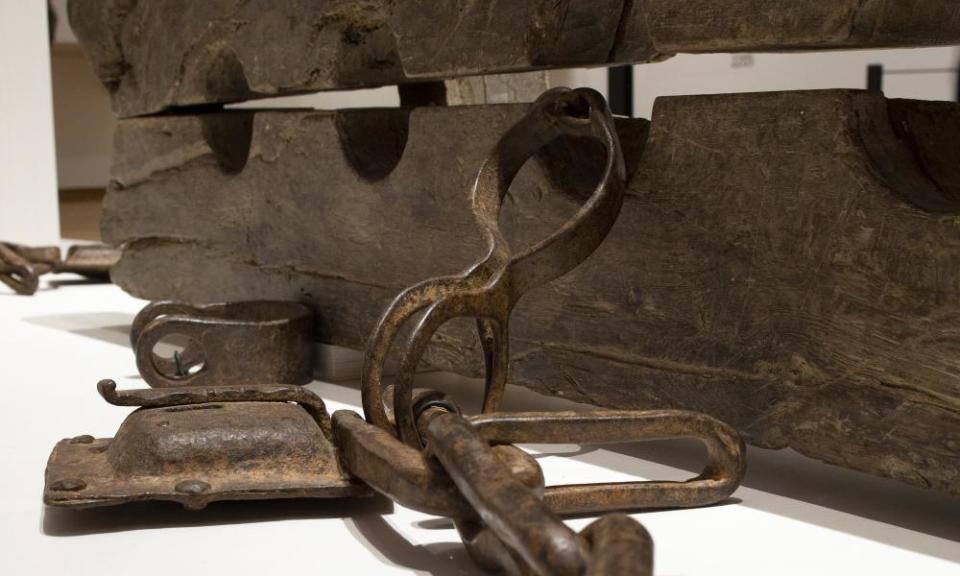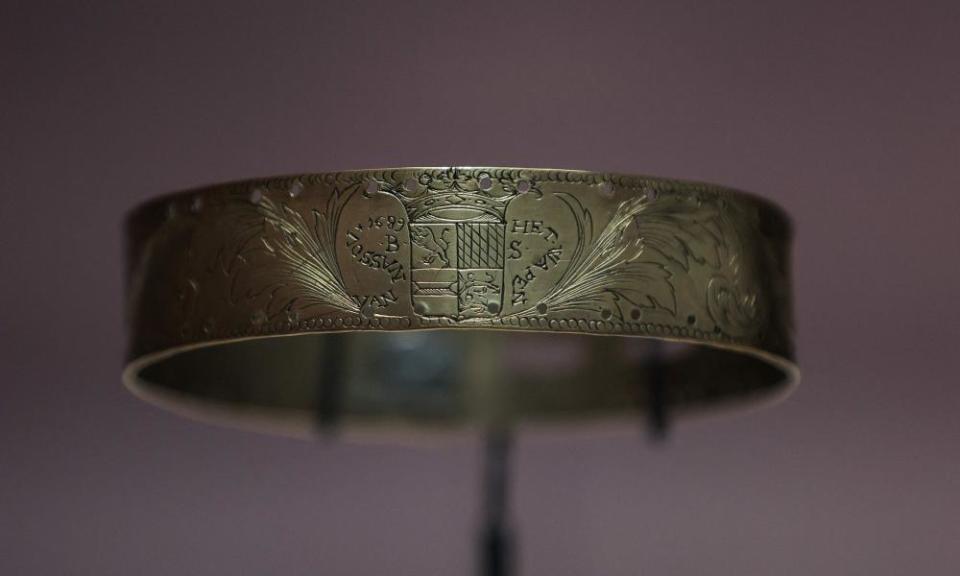Rijksmuseum slavery exhibition confronts cruelty of Dutch trade
The aim of a first exhibition on the Dutch slave trade to be shown at the Rijksmuseum, launched on Tuesday by King Willem-Alexander, is not to be “woke” but to be a “blockbuster” telling a truer story of the Golden Age, the director general of the national institution has said.
Taco Dibbits said his museum had no intention of taking sides in a political and cultural debate but that the royal visit, broadcast live on national television, highlighted that the wealth bestowed and cruelty endured is not just relevant to the descendants of those enslaved.
“I think, I mean obviously you would have to ask [Willem-Alexander] yourself, but I think with that he emphasises that this is part of our history that concerns all people in the Netherlands and not only the descendant of a slave”, said Dibbits. “I mean, it’s about me, it’s about you, it’s about the king himself … it’s about everybody who lives in the country.”
The Slavery exhibition, showcasing 140 objects, ranging from two Rembrandt portraits of married and lavishly wealthy owners of enslaved people to a display of ankle chains, examines 10 lives caught up in the Dutch slave trade between the early 17th century and 1863, when the practice was finally made illegal in Suriname and the Antilles.

An audio guide for the exhibition includes the voice and thoughts of a Ma Chichi, a woman born into slavery in 1853, who in turn tells how her grandmother, enslaved in 18th-century Curaçao, urged her to always remember that she was equal to anyone. “She never did what the lords wanted,” Chichi says in the recording dating from 1958, when she was 105 years old.
Valika Smeulders, a curator of the exhibition and the Rijksmuseum’s head of history, said it had been vital to unearth oral history due to the lack of property and written evidence of enslaved people. “[Chichi] talks about her grandmother telling her you are equal to everybody else, you are equal to the children of the master of the house,” she said. “It gives you a female perspective, which is pretty rare, and it gives you the perspective of the people who were so aware of their humanity even though they lived in a system that took all that humanity away from them.”
Documents on show also detail the horrific fate of many of those who resisted. One, Wally, who worked on a sugar plantation called Palmeneribo, Suriname, in 1707 was sentenced to be slowly burned to death, with the stipulation added by the magistrate Cornelis de Huijbert that he was to have his flesh torn off with red hot pincers in the process in order for his death to be “the most painful and protracted possible”.
Dutch traders shipped over 600,000 Africans to north and South America and between 660,000 and 1.1 million people around the Indian ocean. Last year King Willem-Alexander apologised for the “excessive violence” of the Dutch colonialists in Indonesia. There remains a live debate in the Netherlands about the treatment of empire and slavery in schools and public places through street names and statues, as there has been in the UK. But while Dibbits said the museum did not want to instruct people on what to think, it had to “strive to be completer”.
“I mean, if people want to see it as a woke exhibition, fine, but that’s not what we are after,” he said. “I hope Slavery will be a blockbuster exhibition so a lot of people get to know it. And that’s also why we made an online version of it and why it’s incorporated in school programmes. So … people who haven’t thought about it think about it, and also keep on emphasising that it’s something that concerns us all.”
Smeulders added: “People are very open about them wanting to hold on to what they know but that’s, of course, not what the museum is about. Yes, we’re about history, but our view on history changes continuously.”
One of the confronting revelations of the exhibition, Smeulders said, was that a richly decorated brass collar donated to the Rijksmuseum in 1881 and engraved with the family crests of the Nassau, Vianden and Dietz families, dated 1689, was likely not to have been a dog collar, as originally thought, but one worn by black enslaved people brought back to the Netherlands as servants. “For the longest time people have not wanted to come to terms with the meaning of those collars,” she said. “They were always described as being dog collars but if you look at the paintings, the ones wearing those collars are never the dogs, they are the men.”

The plan to stage the exhibition at the Rijksmuseum in Amsterdam had been first announced in 2017 to some resistance. “One of the first calls I got was from the royal family household, that they would want to support it in any way,” Dibbits said.
The Rijksmuseum currently remains closed to the public but a digital tour is available and students are being invited in free of charge. The exhibition will run until 29 August.

 Yahoo Finance
Yahoo Finance 